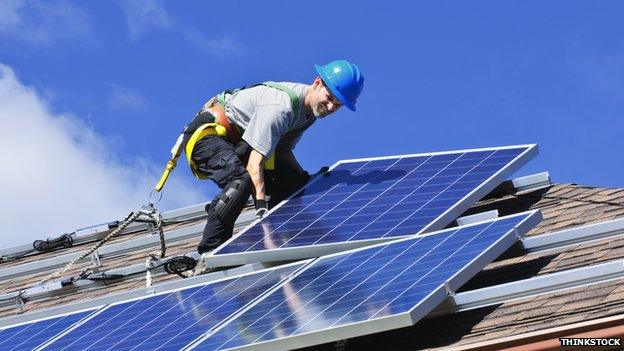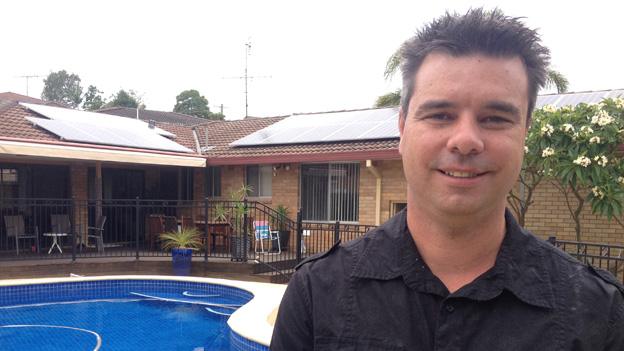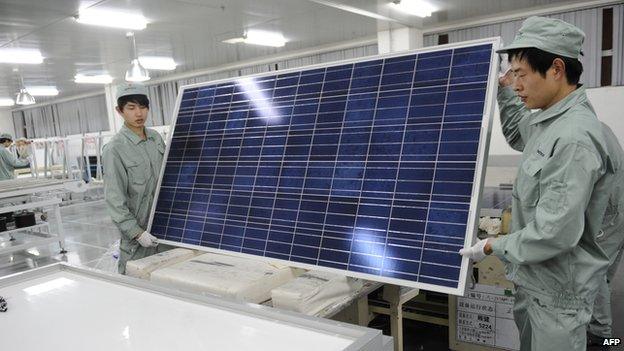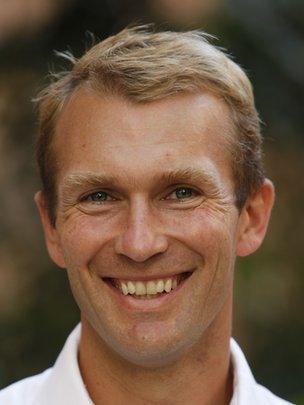Is Australia falling out of love with solar power?
- Published

There are now 4,500 registered solar panel installers across Australia
If there is one thing that Australia is not short of it is sunshine.
Perth, the capital of Western Australia, and the country's sunniest big city, enjoys an average of eight hours of sunshine per day, rising to 11 hours in the height of summer.
Sydney is not far behind, with the Sun on show for more than seven hours each day. And even cloudier and cooler Melbourne gets five and a half hours.
With such enviable weather conditions, one knock-on effect is that Australia leads the way when it comes to the number of homes that have solar panels.
More than a million residential properties in the country now have the systems installed - more than one in 10 houses - which Prof Martin Green, from the University of New South Wales, says only Japan can currently rival.
Other nations, such as Germany, may produce more energy from commercial solar power stations, but Prof Green says Australia and Japan have got the most homes with panels.
The big rise in the number of Australian families fitting solar panels in the past five years or so has been led by a number of factors, such as higher energy bills, the falling cost of the panels, increased environmental awareness, and generous payments for any surplus electricity that such a kitted out property pumps into the grid system.
For the sole traders and small firms that continue to dominate the solar-panel installation sector, it has been a lucrative time.
Yet with Australia's state governments continuing to substantially reduce the levels of minimum feed-in tariffs for unused electricity, demand has slowed while the number of accredited installers has risen.

David Pugh says profits have fallen as rivals have cut costs to win contracts
With about 4,500 installers now chasing work across Australia, according to figures from the Clean Energy Council industry body, some say profits are being trimmed as installers - including some new larger players - have to lower their prices to win work in an increasingly cramped market place.
"It was very profitable, but now the margins aren't what they used to be," says David Pugh, who runs Sydney-based Solar Forca.
"Now you're competing against ridiculous prices, very cheap systems, and you just stand back and go, 'Wow! How are they doing it for that?'"
'Government's whim'
Help to kick start demand for solar panels could soon be on hand thanks to the federal government, which is expected in the coming months to announce the final details of its planed Million Solar Roofs policy.
As the name suggests, Canberra wants to see a million more homes fit solar panels.
To help achieve this figure, it is proposing to offer lower income homes a rebate of 500 Australian dollars ($445; £273) against the cost of getting a system installed.

The price of Chinese-made solar panels is expected to fall
It is expected to confirm that up to 100,000 households per year for the next decade will be able to apply, at an annual cost to the taxpayer of 50 million Australian dollars.
Whether this is enough to offset the state governments' cuts in feed-in tariffs remains to be seen.
For Richard Keetley, owner of Australia Wide Solar, a Sydney-based installer with eight employees, the industry has long been at "the whim of government policy".
He adds: "Some of it at times has been overly generous, and then other times it has been quite restrictive."
'People's power station'
Other installers are hopeful that the cost of solar panels, which are predominately made in China, will continue to fall, enabling them to cut their prices while maintaining similar profit levels.
Laura Eadie, an expert in renewable energy at Australia's Centre for Policy Development think tank, predicts that the cost of Chinese-made solar panels will indeed fall further as production increases.

Rob Stokes says more people are getting solar panels to avoid high electricity bills
At present it typically costs an Australian household between 6,000 and 10,000 Australian dollars to get solar panels installed.
Despite the cuts in feed-in tariffs, some property owners who have already had panels installed, speak about them with evangelical zeal, such as Robert Judson, who has no less than 24 panels on top of his home in Sydney's Merrylands West suburb.
"It is the people's rooftop power station," he says.
"I cannot honestly believe, and I really mean this, that everyone hasn't got them on their roofs."
Rob Stokes MP, the Parliamentary Secretary for Renewable Energy in New South Wales, is confident that more and more people will want to follow Mr Judson's lead and get the panels installed.
He says a key factor is the high energy bills in Australia, and people's wish to avoid them.
"Environmental consciousness is still among the reasons why people install solar, but a much bigger incentive these days is [energy] costs."
Despite recent challenges for the sector, Mr Keetley of Australia Wide Solar, remains confident.
"The future looks very, very bright for solar power in Australia," he says. "Economically solar stacks up."